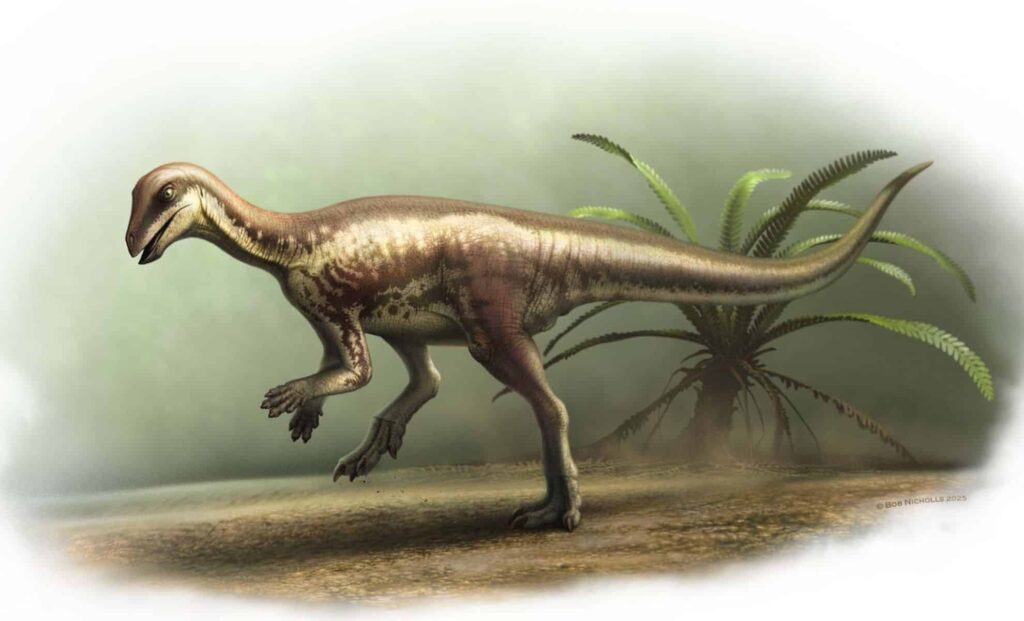
LONDON – A newly discovered dinosaur species, Enigmacursor mollyborthwickae, is set to captivate audiences at the Natural History Museum. This remarkable find, announced by palaeontologists Susannah Maidment and Paul Barrett, reveals a diminutive yet agile herbivore that thrived during the Late Jurassic Period, approximately 145 to 150 million years ago.
Breaking: Enigmacursor’s Unveiling at the Museum
The fossilized remains of Enigmacursor were excavated from the Morrison Formation in the western United States over the course of 2021 and 2022. Initially misidentified as a species of Nanosaurus, the dinosaur’s true identity emerged after meticulous analysis. This study, detailed in a recent publication by Royal Society Publishing, provides fresh insights into the diversity of small, rapid dinosaurs that once roamed North America.
Immediate Impact: A New Perspective on Dinosaur Diversity
Enigmacursor mollyborthwickae adds a fascinating chapter to the narrative of small dinosaurs. Standing at just 64 centimeters tall and stretching 180 centimeters long, this bipedal herbivore likely relied on its speed to evade predators and forage for plants. Its elongated limbs and notably large feet suggest it was among the swiftest of its time, maneuvering in the shadows of giants like Diplodocus and Stegosaurus.
“This is a two-legged dinosaur with very small forearms that it probably used to grasp food,” explained Maidment. “Its speed was an essential trait for survival in the dinosaur-rich environment of the Late Jurassic.”
Key Details Emerge: Anatomy and Adaptations
The discovery challenges the conventional portrayal of dinosaur species, typically dominated by colossal figures, by underscoring the ecological significance of smaller herbivores. Enigmacursor played a vital role in the food chain, contributing to the biodiversity of its era by feeding on vegetation.
The Fast and Agile Dinosaur
The speed and agility of Enigmacursor were crucial to its survival. Equipped with large feet and long limbs, it likely excelled at rapid movement across its terrain. “It was probably quite fast by dinosaur standards,” noted Maidment, emphasizing its adaptation to a life of swift motion to avoid predators while foraging.
Its bipedal stance, unlike some contemporaries that were quadrupedal, allowed Enigmacursor to cover vast distances quickly. This posture facilitated its search for food and evasion of threats, positioning it as a significant player in its ecosystem.
Enigmacursor’s Place in the Dinosaur Family Tree
Originally thought to be part of the Nanosaurus species, a lesser-known group of small herbivorous dinosaurs, Enigmacursor was reclassified following a thorough examination of its fossil. Despite the fossil’s incompleteness, including teeth, neck, tail, backbone, pelvis, and limbs, researchers successfully placed it within the broader evolutionary tree of dinosaurs.
By comparing the missing elements with other small dinosaurs like Yandusaurus and Hexinlusaurus, researchers reconstructed what Enigmacursor might have looked like, offering a glimpse into its appearance and habits.
Background Context: The Morrison Formation Discoveries
The Morrison Formation has been a rich source of Late Jurassic fossils, providing invaluable insights into the period’s diverse ecosystems. The discovery of Enigmacursor adds to the growing understanding of the variety and complexity of life during this era.
What Comes Next: Implications for Future Research
The unveiling of Enigmacursor mollyborthwickae not only enriches our understanding of dinosaur diversity but also sets the stage for further exploration into the adaptive strategies of small herbivores. As researchers continue to unearth new evidence, the story of these agile creatures will undoubtedly evolve, offering deeper insights into their role within prehistoric ecosystems.
The Natural History Museum’s exhibition of Enigmacursor promises to engage the public and inspire future generations of palaeontologists, highlighting the ever-evolving narrative of our planet’s ancient past.





